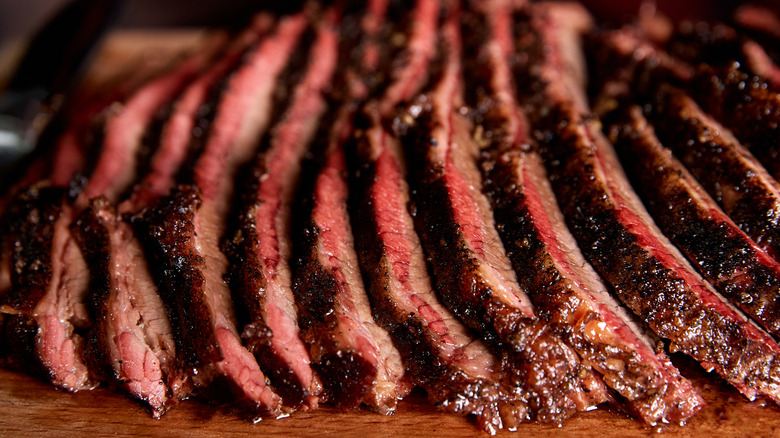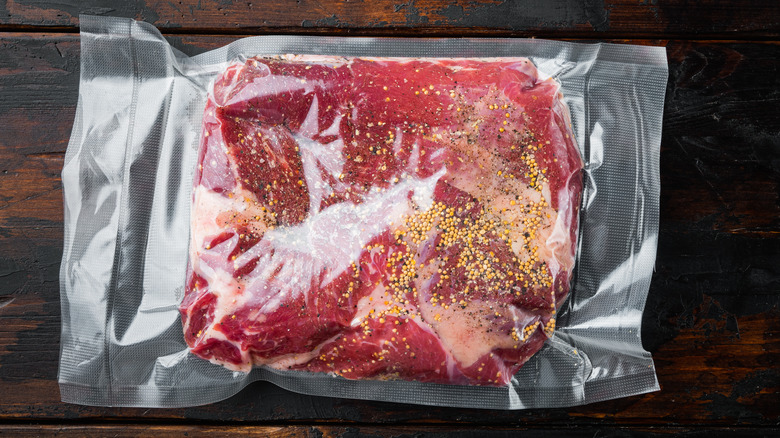Can You Cook Brisket Medium Rare?
Brisket defies the common wisdom of cooking beef. It comes from the pectoral section of the cow and is one of the toughest pieces of meat on the animal. Normally, tough meat is undesirable, but brisket is hugely popular and can be mouthwateringly soft and tender when it's cooked right. That said, brisket is universally cooked until it's well done. Or at least, that's how it's always been. Some chefs are starting to wonder if a quality medium-rare brisket is actually feasible.
The trick is to cook it sous vide. This method of cooking involves vacuum sealing food in a bag and submerging it in warm water. Normally, to achieve tender brisket you need to heat it enough to dissolve all of the connective tissue in the meat. With a traditional cooking method, that means you need to get the meat to at least 160 F, which is when the tissue starts breaking down. When it's finished, most cooks consider brisket at around 200 to 205 F to be well done.
However, a medium-rare brisket is cooked to 131 F, which is a big difference and well below the 160 F needed for traditional methods. Sous vide gets around this discrepancy by taking the low and slow method to an extreme — we're talking 50 to 72 hours of cooking time. That's a long time to wait, but the results are worth it.
Should you make brisket medium rare?
Without a doubt, medium-rare sous vide brisket is going to be succulent and tender, an accomplishment worthy of respect. On the other hand, sous vide brisket is going to have similar drawbacks to other sous vide recipes. A prominent criticism of this preparation, especially when it comes to meat, is that it doesn't sear. The meat does not touch a flame or a hot pan — it's cooked with warm water. The benefit is that it is cooked uniformly throughout, but the drawback is that the texture of the exterior can be lacking. One way around this is to sear the meat when it's done cooking. It won't be identical to a brisket cooked in your smoker, but it can create enough of a crust that you won't mind.
Another point to consider, and it's an important one, is the USDA's recommended cooking temperature for beef. Raw beef should be cooked to 145 F, which is not quite the 131 F of a medium-rare brisket. If you eat medium rare steak, you have already chosen to disregard the USDA's advice, potentially placing yourself at risk of foodborne illness. Considering the risks are similar for medium-rare brisket and medium-rare steak, it's advisable to follow USDA guidelines.

